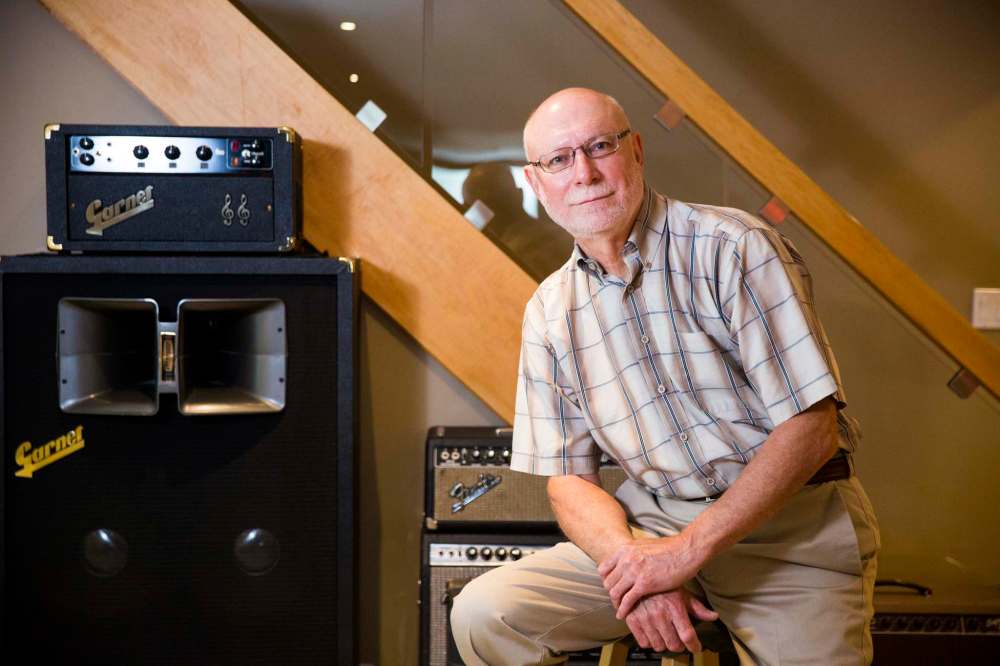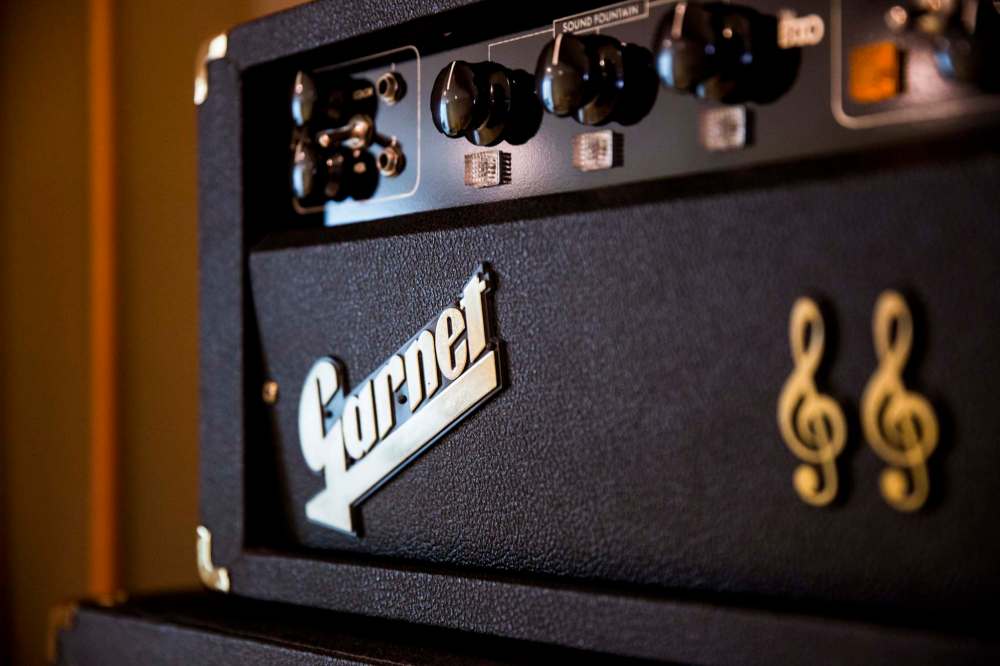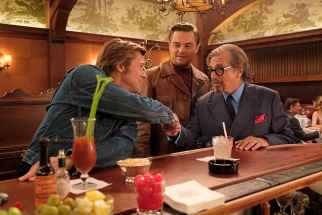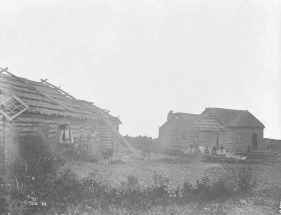Amped up Retired electronics wizard keeps guitarists' vintage tube equipment alive, brings long-forgotten pieces back to life in his East St. Paul basement
Read this article for free:
or
Already have an account? Log in here »
To continue reading, please subscribe:
Monthly Digital Subscription
$0 for the first 4 weeks*
- Enjoy unlimited reading on winnipegfreepress.com
- Read the E-Edition, our digital replica newspaper
- Access News Break, our award-winning app
- Play interactive puzzles
*No charge for 4 weeks then price increases to the regular rate of $19.00 plus GST every four weeks. Offer available to new and qualified returning subscribers only. Cancel any time.
Monthly Digital Subscription
$4.75/week*
- Enjoy unlimited reading on winnipegfreepress.com
- Read the E-Edition, our digital replica newspaper
- Access News Break, our award-winning app
- Play interactive puzzles
*Billed as $19 plus GST every four weeks. Cancel any time.
To continue reading, please subscribe:
Add Free Press access to your Brandon Sun subscription for only an additional
$1 for the first 4 weeks*
*Your next subscription payment will increase by $1.00 and you will be charged $16.99 plus GST for four weeks. After four weeks, your payment will increase to $23.99 plus GST every four weeks.
Read unlimited articles for free today:
or
Already have an account? Log in here »
Hey there, time traveller!
This article was published 26/07/2019 (2330 days ago), so information in it may no longer be current.
Not too long ago, Larry Kohut, owner-operator of Red Rock Amps, took a call from a Winnipegger whose guitar amplifier was on the fritz.
After answering a few questions from Kohut about the device’s make and model, the caller had a query of his own: where is Red Rock Amps situated, precisely?

Kohut, whose area of expertise is repairing tube amplifiers largely built in the 1960s and ’70s by manufacturers such as Garnet, Marshall and Hiwatt, replied he works out of a basement studio in his home, located just off Henderson Highway about eight kilometres north of the Perimeter Highway. To which his inquisitor remarked, “My, that’s kind of far,” then hung up.
Juxtapose that with the Fort Frances, Ont. resident who, almost every time he pays a visit to these parts, pops by Kohut’s place with a decades-old amp in need of some TLC. Or the guy from Regina who once loaded eight vintage amps into his vehicle and, after making the seven-hour trek to East St. Paul to deliver his treasures to Kohut, immediately turned his car around to head back to Saskatchewan.
“I don’t cut corners, the parts I use are precise and if I do my job properly, an amp brought to me should end up sounding the same as it did the day it was originally purchased.”– Larry Kohut
“Because of instances like that, I do find it a bit amusing when somebody from Winnipeg says they don’t want to drive eight minutes past the Perimeter,” says Kohut, seated in his neat-as-a-pin workshop, dressed in a plaid, short-sleeve shirt and perfectly pressed khakis.
“The thing is, there are probably only 200 people around the world who do what I do — complete cosmetic and electronic restorations of amps that are, at times, 50 or 60 years old. I don’t cut corners, the parts I use are precise and if I do my job properly, an amp brought to me should end up sounding the same as it did the day it was originally purchased. I like to believe that’s the reason some people are willing to travel five, six, seven hours to enlist my services.”
Oh, about that guy from Winnipeg at the top of the story whose amp wasn’t functioning properly? Well, a month after contacting Kohut, he reached out to him again, this time to say he had taken his amp to a repair shop closer to his neck of the woods and wasn’t pleased with the result. Also, what did Kohut say his address was, again?
•••

Kohut, 68, compares buying a guitar amplifier to purchasing a car. Sure, you can pick up a new amp at any number of music stores in the city. But as soon as you take it home and plug it in, it begins to lose its value, the same way a new vehicle’s worth plunges the second you drive it off the dealership lot.
“You can buy a reissue Fender amp for $800. But if you want to sell it a couple years later when you’re ready for something else, you might get $400 if you’re lucky,” he says.
But if you invest two or three times that amount in a vintage Fender amp built in the 1950s or ‘60s, down the road it should still net the same price, if not more, he says. When people come to him seeking advice, he always tells them if they can afford it, definitely buy vintage; even after spending whatever it costs to restore an old amp to its original glory, they’re still going to come out ahead.
Kohut grew up in Ontario. He discovered he had an aptitude for electronics while studying receiving tubes in his Grade 11 shops class. In 1968, his parents bought a hardware store in Morris. He assisted his father and mother in the shop for a year while completing Grade 12 at Morris School, after which he enrolled in a two-year electronics technology course at Red River College.
Kohut’s first post-college job was as an electronics technologist on Baffin Island. He spent two years in the Far North, servicing radar equipment that made up the Distant Early Warning Line, or DEW Line, a defence project built during the Cold War era by Canada and the United States to give the two nations advance warning of a Soviet nuclear strike.

“That was a great experience, an adventure really, but when my mother died very suddenly at age 49, my dad needed help, both mentally and physically, so I returned to Morris and worked with him in the store for another year,” he says.
In 1973, Kohut landed a position maintaining equipment in the University of Manitoba’s computer centre. He remained there for seven years before getting hired by Hewlett-Packard. The married father of two spent the next 26 years providing hardware support for such large-scale customers as Environment Canada and Canadian National Railway.
Here’s the amusing part of the story: Kohut can’t play a lick of guitar. But because the rest of his family is musically inclined — his wife Joanne was an elementary school music teacher, and both their children are accomplished musicians — it was during his tenure at Hewlett-Packard when the seed for Red Rock Amps was initially planted.

In the mid-1990s, his son Karl, currently an assistant professor in the University of Manitoba’s faculty of music, participated in a summer jazz camp run out of the West End Cultural Centre. At some point, Karl, an electric bass player, plugged into a supplied, ’60s-era tube amplifier. According to his father, he was immediately “blown away” by how it made his instrument sound; “warmer” was the word his son used, Kohut recalls, similar to how some audiophiles prefer the sound of vinyl over a compact disc.
Kohut had a passing familiarity with Garnet amps, a brand built in Winnipeg by the late Gar Gillies, a trombonist who started constructing guitar amplifiers in the 1960s, and gained worldwide recognition for his handiwork when the Guess Who, whose members used his amps almost exclusively — late guitarist Kurt Winter was rarely seen wearing anything other than a Garnet T-shirt — began to dominate the pop charts. So when Karl told him he wanted to get a vintage bass amp for himself, he responded, “Cool, let’s do it,” and they paid a visit to Garnet’s West End workplace.
Soon, friends of Karl’s, guys he played in bands with, were shopping for vintage amps of their own. And because Kohut had brought his son’s amp “back to life,” they began approaching him, hoping he could work his magic on their amps, as well.

“At first, when I started looking inside these things, at the circuit boards and stuff, it was like gazing at a forest; all I could see was the forest,” he says. “In time though, thanks to my (electronics) background, I began to see the individual trees, so to speak. I began to recognize how the electrons were going around the circuits, how the sound was coming through the amp.
“Even though it’s been 10 years since I officially established my business, I’m still learning something new every day. Each job is a different experience. I never know what I’m going to be up against until I take an amp’s grill off.”
Kohut, whose business name Red Rock Amps is a subtle nod to Garnet amps, a garnet being a red-coloured gemstone, works on between 100 and 130 amps a year, some the property of professional, touring musicians. (Ask him about the time Big Sugar was playing the Burt, and he had only a few hours to repair lead guitarist Gordie Johnson’s amp before the band went on stage.)
Now that he’s retired, the extra income is appreciated. But the monetary gain is secondary to seeing the look on a customer’s face when they come over to pick up their newly restored amp, he says, at which he point he encourages them to plug in and give it a whirl, right there in his rec room.
“Not only do I get to meet some really interesting people — my customers range from blue-collar workers to heart surgeons — but I get to witness the strong, emotional attachments people have for these amps,” he says.

“Some (amps) belonged to their father or grandfather and they want to get it working again for themselves. I had one guy bring in an old Traynor amp that had been sitting in his garage for 30 years, ever since he played in a high school garage band. Just lately he’d picked up his guitar again for the first time in years and when he came over and turned his amp on… he said he felt like he was 18 again.”
One more thing, if you’re the type who enjoys viewing old, grainy rock and roll videos, Kohut might not be the best person to watch them with.
“I’m always looking in the background to see what sort of amps they’re using,” he says with a chuckle. “If I’m watching a movie set in the ‘60s, I’ve been known to freeze the screen to make sure whatever amps a band is using are correct. If they aren’t I’ll lean over to my wife and say, ‘Hey, those are from the completely wrong era.’”
For more information, go to www.redrockamps.com
david.sanderson@freepress.mb.ca
Dave Sanderson was born in Regina but please, don’t hold that against him.
Our newsroom depends on a growing audience of readers to power our journalism. If you are not a paid reader, please consider becoming a subscriber.
Our newsroom depends on its audience of readers to power our journalism. Thank you for your support.










